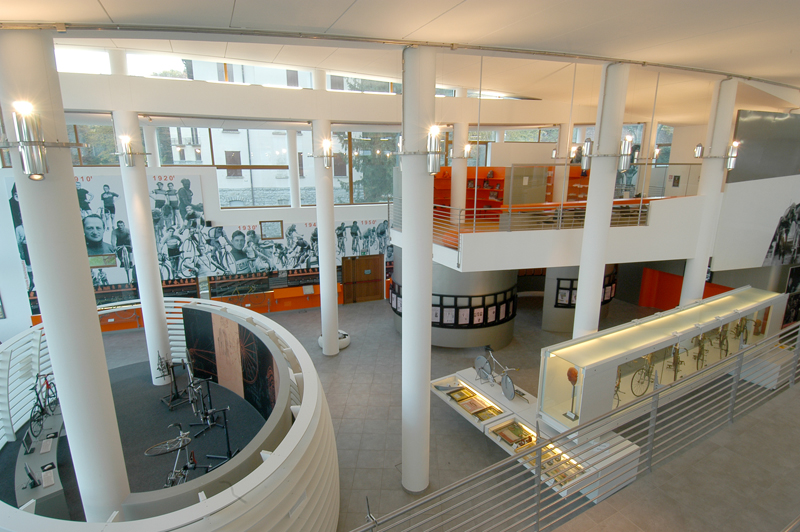Progetti

ALLESTIMENTO DEL MUSEO DEL CICLISMO A MAGREGLIO
Magreglio (CO) I 2001-2006. Inaugurazione 14 Ottobre 2006
Committente: Fondazione Museo del Ciclismo
Madonna del Ghisallo
Progetto museografico: Pier Federico Caliari
con Carola Gentilini
Per il Museo del Ciclismo Madonna del Ghisallo, collocato in un luogo di grande bellezza paesaggistica, è stato elaborato il progetto allestitivo, l’ordinamento museologico, la multimedialità e il progetto della grafica coordinata.
I due problemi principali erano:
– la mancanza di un curatore di riferimento, e quindi di un progetto museologico.
– la mancanza di una collezione.
Sicché è stato necessario assumere anche la direzione temporanea del Museo e la curatela museologica per poter articolare una narrazione credibile, decidere una collezione e avanzare una strutturata proposta museografica.
Il Museo è stato quindi suddiviso in cinque sezioni corrispondenti a grandi tematiche caratterizzanti la storia del ciclismo sportivo, ed associato ad altrettante isole allestitive formalmente autonome. Con la pressione della data dell’inaugurazione e in assenza di una collezione fisica, ciò ha permesso di procedere con la realizzazione dell’allestimento: in pratica si è dovuto procedere al contrario di come normalmente si fa e partire da un allestimento precedentemente ipotizzato, ma sufficientemente aperto ai contenuti che sarebbero giunti successivamente. Un rischio notevole, che ci siamo assunti e che siamo riusciti a tenere sotto controllo grazie ad un equilibrato rapporto tra progetto grafico e presentazione di oggetti fisici, che sono finalmente giunti a poche ore dall’inaugurazione.
Il progetto ha riguardato non solo gli spazi espositivi, ma anche la zona shopping e caffè, la biblioteca e sala conferenze e la sala per mostre temporanee. Oggi il Museo del Ghisallo, a dieci anni dalla sua apertura, è considerato un punto di riferimento per i cultori della storia del ciclismo sportivo “eroico”.
For the Madonna del Ghisallo Cycling Museum, located in a place of great scenic beauty, it was drawn the exhibition design, the museological system, multimedia project and the design of the coordinated graphics.
The two main problems were:
– The lack of a reference curator and then of a museological project.
– The lack of a objects collection.
So it was necessary to take also the temporary direction of the Museum, and the museological curatorship to be able to articulate a credible narration, to choose a collection, and advance a structured museographical proposal.
The museum was then divided into five sections corresponding to major themes that characterize the history of sporty cycling, associated to the same number of formally autonomous exhibition islands. With the pressure of the inauguration date and in the absence of a physical collection, this allowed to proceed with fit out the set up and the main scenographiy. Practically it was necessary to do what it is normally doing at the contrary, from a set up architecture previously assumed but sufficiently open to contents that would come later. A considerable risk that we made and that we managed to keep under control thanks to a balanced relationship between graphic design and presentation of physical objects.
The project involved not only the exhibition spaces, but also the shopping and cafe area, library and conference room and a room for temporary exhibitions. Today the Museo del Ghisallo, ten years after its opening, is considered a benchmark for lovers of the history of the sporty “heroic” cycling.





















